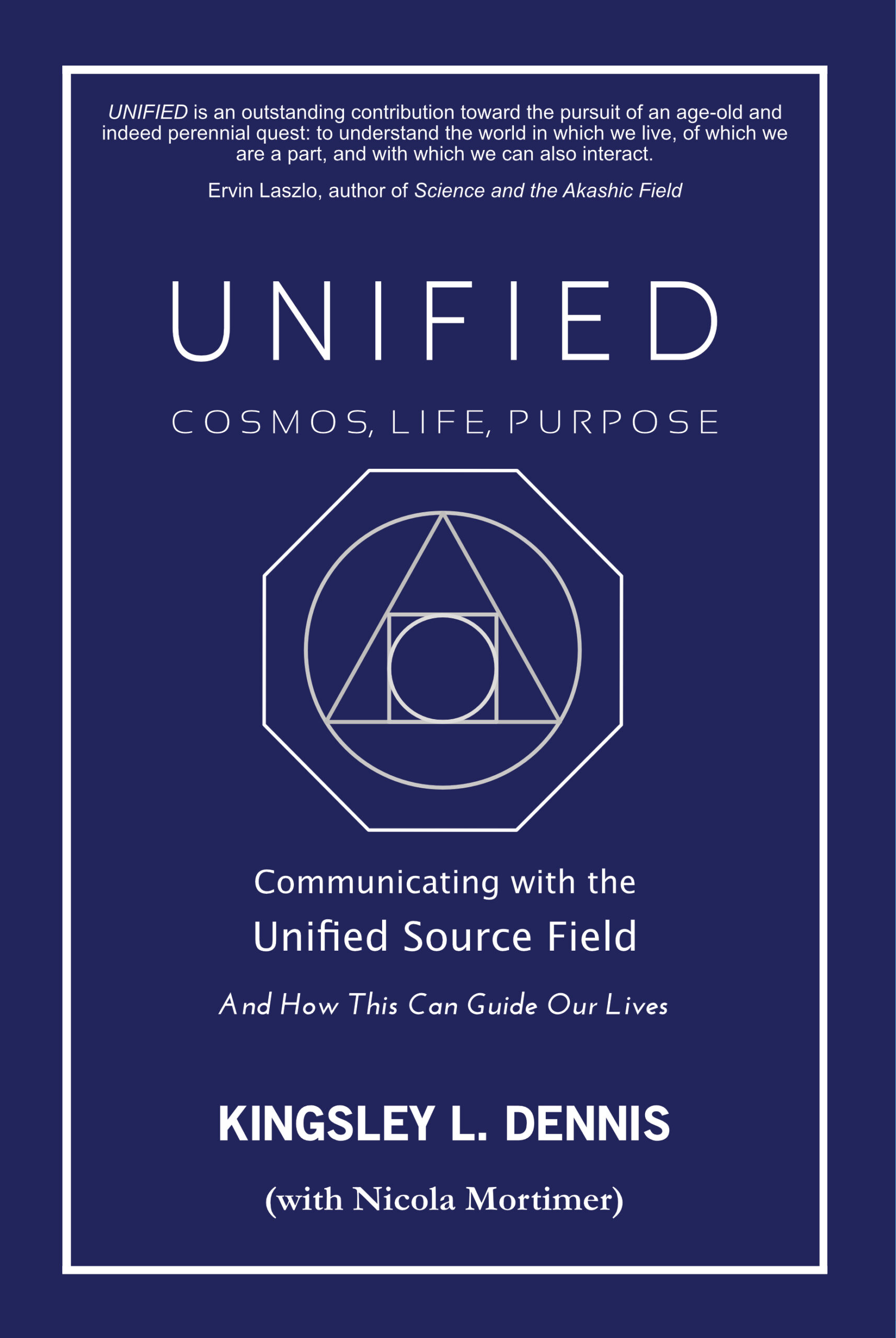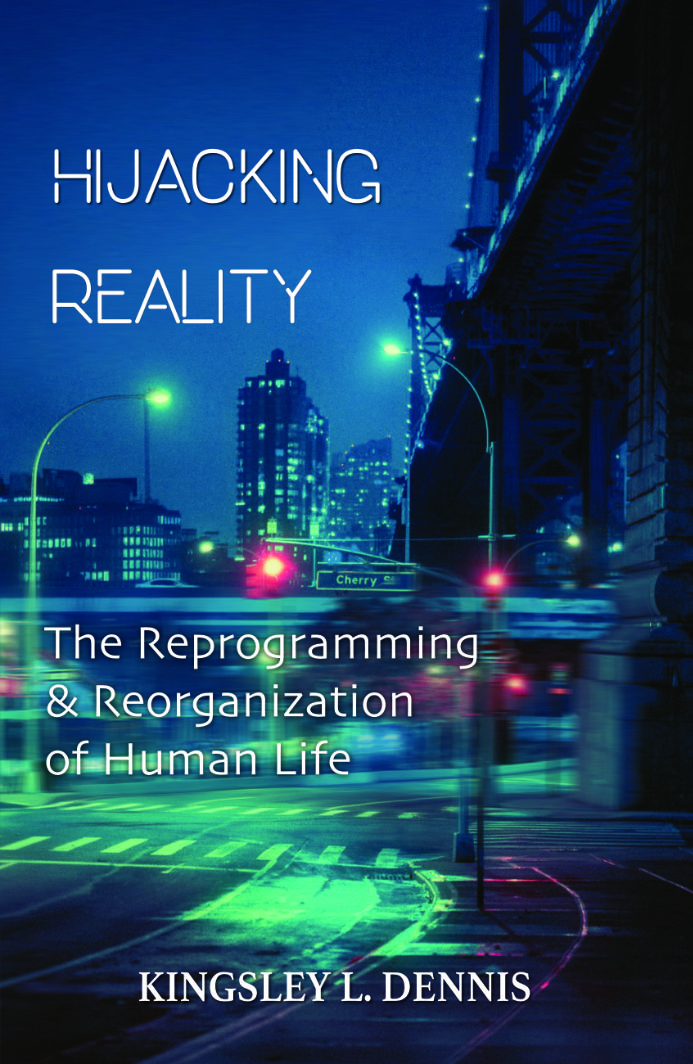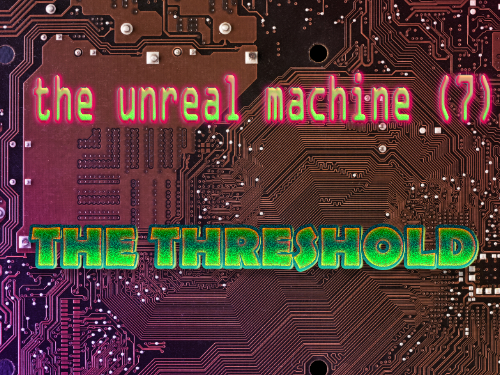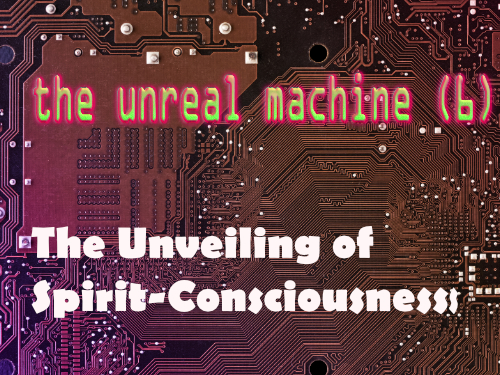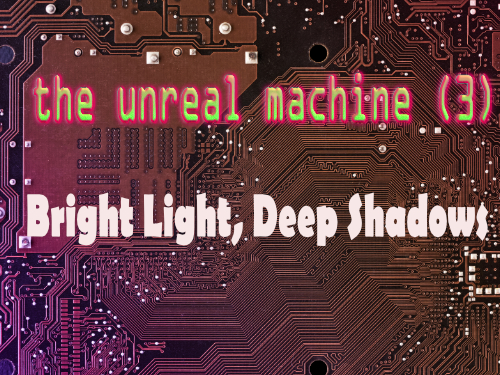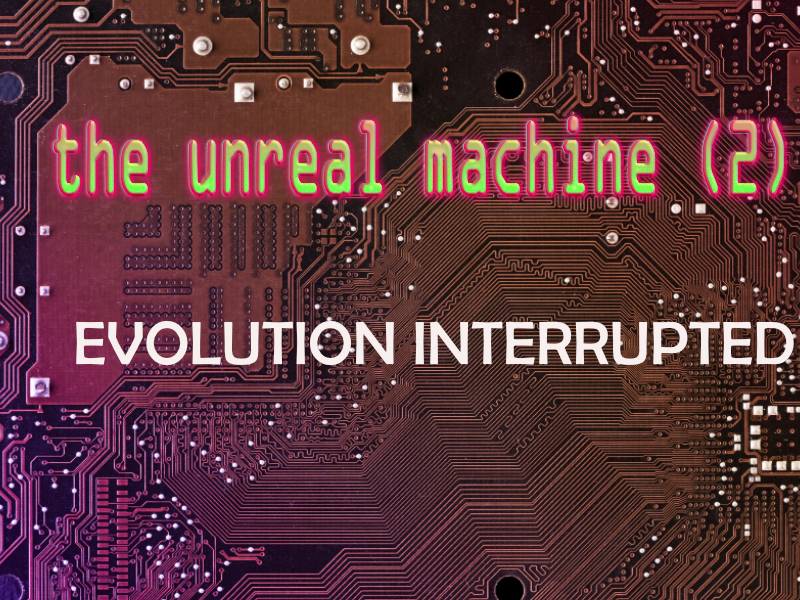O Awaken not the Beauty until the time comes
Inscription in Chartres Cathedral
Let’s be honest on the matter – as a dominant species on this planet we haven’t been very nice of late to the feminine. And by the word ‘feminine’ I don’t just mean the woman – or even the body of the woman – but the whole body of feminine soul. It is the unseen web of life what connects us to everything, and which reflects the flow of the cosmos. Everything that is not a part of this feminine soul steers in the other direction toward separation and separate-ness. In Western civilization especially the quest for freedom, the desire to explore and conquer new territories, to strive for ideologies of scientific and technological progress, has largely been dominated by a masculine energy. It is the energy that seeks end goals; it requires results and accomplishments. It desires to go beyond limitations, for better or for worse, where the ends often justify the means. This masculine urge has pushed forward as a deep impulse, not only for discovery but for legacy. The masculine impulse wants to secure a lasting physical legacy; whilst the feminine influence seeks a gentle eternity in the evermore.
In the recent history of our species on this planet – that is, for the previous two millennia at least – we have strayed away from the feminine influence, both in spirit and in image. The effects on our planet from the neglect of the Feminine have been dramatic. In many ways it is similar to the loss of soul connection. It is a lessening of the instinctive knowledge in the face of acquired knowledge. It is a loss of the reverence for the interconnection and sanctity of life; a dwindling of our trust in the power of the imagination; and a shrinking away from our compassionate participation with a playful and creative cosmos. The ‘feminine’ and the ‘masculine’ are forms of being and energy that correspond to how we process consciousness. Often when speaking of these terms I am referring to modes of consciousness that have shaped our perspectives and worldviews, and hence our social and cultural environments. I am not speaking of gender, sexuality, or of physical bodies. I refer to the energy of being that we choose to respond and act from.
The masculine consciousness is also behind the image of a divinity that belongs to the heavens. From ‘up there,’ the dominance of a masculine god has made it permissible to develop a science that would seek to take control over our environment. The materially driven ‘modern’ cultures that arose from this mode of domination resonate with the alienation and individualism reflected by the remoteness of a masculine god. The notion of a restored perfection – for the new ‘Adam’ – was a male ideal that successive generations of monks, magi, and Masons have all striven for under the aegis as apostles of the religion of technology. Through this path modern life divorced itself from the sacred integral interdependence of the wholeness of creative life. As mystic scholar Llewellyn Vaughan-Lee says, ‘Men have a deep fear of woman’s magical nature and over the centuries many patterns of repression have been imposed to deny her access to her magical power.’1 This comment reflects back upon the witch hunts during the 16th-18th centuries in Europe where tens of thousands of women accused of being witches were put to death. The executioners were almost exclusively men who represented the church hierarchy. This was a masculine energy that for millennia had been parading and swinging its heavy paternal axe of hierarchical power. And the witches were yet another manifestation of female power that the ecclesiastical authorities could not tolerate. Some of these so-called ‘witches’ were women who knew about herbs, how to heal and nurture people, or simply how to listen to nature – whilst the majority were purely the innocent victims of malicious gossip or misaligned fear. One of the things they were accused of, amongst many, was of gathering and conspiring together. How did they gather? They gathered in witches’ circles – here we have the energy of hierarchical power against the energy of circular, relational flow. It was also the fear of a ‘magical presence’ within the feminine that fuelled a deep repression, which over the centuries has become a pattern – the denial of the subtle, the integral, the nurturing. In other words, witch hunting was by and large ‘women hunting.’
The masculine consciousness likes to be visible and make its imprint known; whereas the feminine energy is more veiled and hidden; it is more subtle. The downside to this has been that our societies have predominantly valued that which is visible, and rejects or ignores that which is less tangible or restrained. The Shift from Lunar to Solar Our earlier ancestors lived within a different sense of reality. Many of our pre-modern cultures were animated by a sense of living within a sacred order, and were shamanic by aspects if not by practice. These pre-modern/shamanic cultures had an instinct for relationship and connection; they exhibited a type of consciousness that anthropologist Lucien Levy-Bruhl described as participation mystique. This sense of the transformative presence – the participation mystique – framed the consciousness that defined the ‘Lunar Era.’ The Lunar Era shared a mythology across its cultures that included some, or all, of the following themes: death and rebirth; descent and return from the underworld; journey or quest; transformation; sacred marriage; and birth of a divine child/soul. This feminine energy manifested as a cosmic dimension of soul; as an inherent sacred order that bound all visible and non-visible realms. The Great Mother/divine feminine lies at the heart of many western quest mythologies, such as Odysseus returning home to Penelope under the guidance of Athena; Theseus following Ariadne’s thread through the Cretan labyrinth; Dante’s journey through the underworld to find his Beatrice; and the medieval quest for the Holy Grail. All these quests frame the need to connect with the imminent and transcendent feminine principle. Yet, as in all cycles, the Lunar Era passed and in its place came what has been called the Solar Era. The shift from a lunar to a solar consciousness, around 2000 BCE, triggered a new phase in the development of Western civilization. Most significant was the break from the participation mystique of the Lunar Era. Historians have pointed to migration patterns and invading cultures as two principal factors that contributed in the shift from lunar to solar cultures. For example, the agricultural communities of the Fertile Crescent saw great change come upon them in around 2200 BCE. The reasons for this could be numerous, such as a change in climate that resulted in forcing communities to seek new territories. Whatever the reasons, the resulting changes saw invaders on horseback bringing with them their male sky gods. Similarly, the Sea-Peoples invaded from the Mediterranean, bringing with them their conquering masculine attributes and ideals. War and conquest became the new devastating theme of the age where Egytpian, Babylonian, and Assyrian mythologies tell of warlike leaders idealized for their violent victories. The Lunar Era imbibed the soul of the cosmos as part of the sacred order of life. Human life – its rituals and culture – participated in the grand mythic nature of the world. In contrast, the Solar Era consciousness that came in, quite forcibly, was focused on the conquest and mastery of nature, and celebrated those potent individuals whose power separated them out from the tribal group community. The solar hero is the warrior, with attributes of a masculine deity (later the god of the three Abrahamic religions). This ‘sky god’ was the creator of the heavens and the earth, and everything that lay in-between. And yet the deity itself lay separate from its creation, distant and beyond. In this was born the division between creator and creation; between nature and spirit. This shift to the Solar Era consciousness initiated a new phase in the perception of life. Humanity’s worldview shifted to where it saw nature as something to be controlled and manipulated, whilst some far distant deity in the skies was no longer immanent within the forms of nature. The sun became the new focus of consciousness: the hero is no longer the shaman/priestess who navigates between worlds, venturing into the Otherworld, but is now the outstanding warrior individual or warrior king. It is a warrior hero who fights in light against the darkness to vanquish ‘his’ enemies. The Solar Era consciousness gave rise to the concept of the Holy War – the dualistic notion of the victory of good over evil, and the means of human sacrifice in war to justify the goal. It is this mythology of the Solar Era consciousness which is petering out today and yet in its final gasps of power has created the current myth of the ‘War on Terror.’ The permanent war without a definable enemy – with the potential enemy being amongst us, friend as foe – is a creation from the solar consciousness. This thinking has even infiltrated into our corporate world and influences the modern male psyche. In our institutions of knowledge – our science and academia – the need to race and win over our rivals is the warrior spirit that is often conditioned into us from an early age. Our edifices of investigation and inquiry are patented as masculine realms. The emergence of the powerful image of a male deity also shifted our cultural consciousness away from the earthly, nurturing body-womb of the Mother/Goddess/Gaia toward the mind-word (logos) of the Father. The Solar Era developed and celebrated the strong individual, and with this came the rise of the conscious ego which also laid the groundwork for the later rational mind. Yet the price to be paid has been high, as the sacred impulse was driven out of the world and back into shadow. The reality of the Solar Era saw no place for the nurturing instinct or for the role of intuition. Creative imagination became an outsider – the affectation of daydreamers. In the Solar Era phase of our evolution the human psyche was split between the conscious rational mind (the hero) and the older power of instinct (the dragon). And, like good old Saint George, we’ve been fighting our dragons ever since! The consciousness of the modern human – the consciousness of modernity – has cut itself off from the sacred; from the source of the ‘magical realm;’ from the imaginal otherworld that infuses our reality-matrix. It has almost succeeded in disassociating itself entirely from this source, but not totally. And so we may ask ourselves whether the passage from the Lunar Era and through the Solar Era was a necessary stage in our evolutionary journey? The energetic force behind the solar-masculine impulse must surely now have to come to terms with the feminine principle. The sacred source of life is calling out for a recovery of wholeness as an integral consciousness comes to manifest more strongly in these years ahead. The sacred re-marriage of the older lunar consciousness with the incumbent solar consciousness will serve to provide us with a grander and more inclusive perception of reality. The Sacred Marriage The alchemists had the notion of unus mundus – a unifying cosmic ground in which both matter and psyche (soul) participate. This is the union between the masculine and feminine impulses/energies, which together form the unified unus mundus. This sacred marriage of the lunar and solar consciousness, in mythological terms, results in the birth of the ‘child’ – a new integral consciousness arising within the collective human species that recognizes the sacredness of life. This revival of sacred consciousness has its own modern mythology – in our recent communion with Earth’s lunar satellite, the moon. The Apollo Program succeeded in making six spaceflights and placing twelve human beings on the moon.[ii] From these spaceflights we have received spectacular vistas and visions of the Earth from afar. The most popular of these photos – Earthrise – showed the Earth rising from beyond the moon’s surface, as taken by astronaut William Anders in 1968 during the Apollo 8 mission. This photograph has been credited with catalyzing a change in the human mind, and even with triggering the environmental movement. It was the first time our species had gained a vision of the beautiful homeland from off-planet. Its effect was startling, and not only on those who remained on the ground, gazing up. Several astronauts have confessed their epiphanies of experiencing the spectacle of outer space. Edgar Mitchell, astronaut on the Apollo 14 mission and sixth person to walk on the moon, had this response: …my mind was flooded with an intuitive knowing that everything is interconnected – that this magnificent universe is a harmonious, directed, purposeful whole. And that we humans, both as individuals and as a species, are an integral part of the ongoing process of creation.2 Gene Cernan, the last astronaut to leave the moon (on Apollo 17), had a similar epiphany – ‘I stood in the blue darkness and looked in awe at the earth from the lunar surface. What I saw was too beautiful to grasp – there was too much logic, too much purpose. It was too beautiful to have happened by accident.’3 In leaving Earth we explored the moon, the age-old symbol of the Great Mother, the Feminine, and the Soul. By leaving Gaia’s earthly folds, from having the Earthrise vision from space, humanity was lifted beyond its petty earthbound nationalisms. Humanity experienced an expansion in perception and consciousness – a small step toward a fully extended mind. It was also a trigger moment in the sacred rebirth of the Feminine impulse back into the collective soul of our species. A sacred energy began to reawaken out of its darkness and back into the light; reaching for the intuitive, the visible, within a multitude of longing hearts. It marked the time to reconnect to the soulful guidance and wisdom of the feminine impulse. The revival of the sacred feminine has an important part to play in our emerging planetary consciousness. Human compassion and intelligence can now begin to find conscious expression and participate in both planetary and cosmic life. The feminine impulse has already entered into our global systems, infrastructure, and technologies. It has been the energy behind the restructuring and recalibrations now unsettling our societies. This has been born out in the shifts now taking place as many top-down hierarchical systems are transitioning to bottom-up, decentralized and distributed systems. The most prominent example of this is in our global technologies of communication. Our modes of communication have shifted from one-to-one (for example, television); to many-to-many (digital communications, such as the Internet). Our vastly expanding digital world is more than a communication device, more than an ‘Inter-net,’ and more than a world of information and other goodies – it is now a symbiotic part of life on this planet. Humanity has always been a part of symbiotic life on this planet. Nothing – no species – exists in isolation. Symbiotic humanity is now extending this relationship into a technological partnership. It is another alchemical bonding as matter and mind merge and coalesce further into a unified field of immersion, cohesion, and communication. And now this transformation is being played out in our global societies, gradually and in diverse ways. As scientist and futurist Joël de Rosnay notes, the ‘transition to Symbiotic society calls for biological and ecological concepts, those involving communications, transversality, and networks, and this reveals the need for new, feminine, values.’4 These feminine values are inherent in how our increasingly complex and decentralized networks are recalibrating the ways we connect and communicate. New initiatives, innovations, projects, friendships and relations, are emerging from our interconnected networks. The new multiplicities are undermining the once-dominant masculine consciousness and energy. The new collaborative spaces are all about multitasking – from share economies to information swapping. The global platform has increasingly become a space for such issues as human rights, education, health care, child care, welfare, and the environment, etc. These mounting issues, as well as the manner of how they are multi-tasked and openly discussed, all belong to the nurturer instinct rather than the hunter/killer. In other words, the nurturing and meaning of relationships traditionally belong to the feminine, and in the past our technological developments were not always resonant with the feminine energy. Yet now our emerging digital technologies are creating, forming, and opening up new pathways and interconnections for the feminine impulse to enter and permeate our material world. As stated, our physical institutions and systems are responding to this new intervention by shifting from top-down structures to distributed and decentralized networks. The feminine energy/consciousness now has a crucial role to play in the development of our new technologies and the emerging planetary mind that promises to offer us an exciting, thriving, as well as challenging, future. References 1 Vaughan-Lee, Llewellyn (2009) The Return of the Feminine and the World Soul. Point Reyes, CA, The Golden Sufi Center, p83 2 Cited in Baring, Anne (2013) The Dream of the Cosmos: A Quest for the Soul. Dorset, Archive Publishing, p228 3 Cited in Baring, Anne (2013) The Dream of the Cosmos: A Quest for the Soul. Dorset, Archive Publishing, p227 4 de Rosnay, Joel (2000) The Symbiotic Man: A New Understanding of the Organization of Life and a Vision of the Future. New York, McGraw Hill, p236 Adapted from Kingsley L. Dennis’s forthcoming book, The Sacred Revival: Magic, Mind & Meaning in a Technological Age (October 24th 2017) [i] The emphasis here is largely upon western societies, and later those societies that underwent the industrial revolutions of the 18th and 19th centuries. [ii] Despite various alternative speculations, this is the official story.



